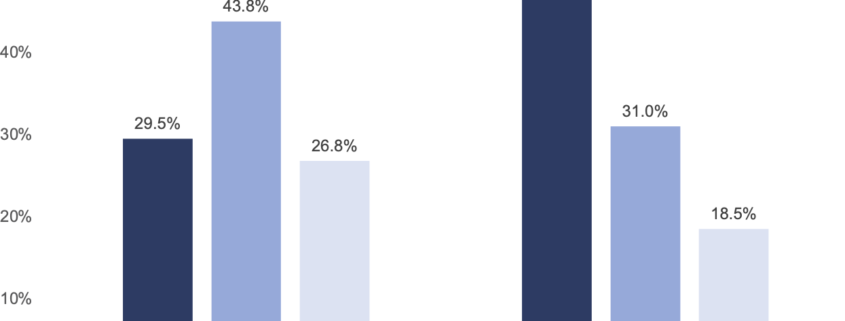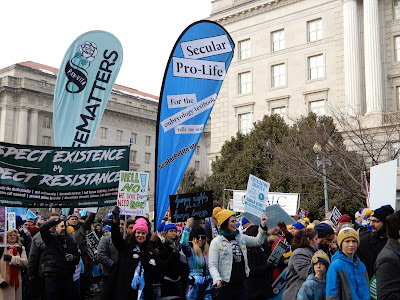Study: Women considering abortion who visit CPCs are more likely to continue their pregnancies
In July of 2021, PLOS One published “Pregnancy outcomes after exposure to crisis pregnancy centers among an abortion-seeking sample recruited online.” As of the time of this article, the research is fully available without journal access, if you’d like to read it directly. Here are some notes:
The authors have pro-choice affiliations but, in my opinion, described crisis pregnancy centers (CPCs) fairly:
Pregnancy resource centers, or crisis pregnancy centers (CPCs), are generally religiously-affiliated non-profits with physical locations that operate with the goal of convincing pregnant people considering abortion to parent or place their child for adoption and not to have abortions. These centers often provide pregnancy tests, free ultrasounds, and other material support to pregnant people and have proliferated over the past few decades.
The authors estimate about 3x as many CPCs as abortion clinics across the country.
I think it’s fair to say that most CPCs have the goal of convincing people considering abortion to not get abortions, but I think they want to help women going through pregnancy whether they are abortion-minded or not. Some also try to help women who have already had abortions. At least the ones I’ve visited have offered post-abortion counseling (or referrals for it) and prior research has found that the strong majority of those visiting a CPC were already planning to continue their pregnancies and sought out the CPC for emotional and material support.
[Read more – In-depth interview: Kristi Burkhart, Executive Director, Pregnancy Care Center]
Over 10% of women seeking abortion visited CPCs within the next 4 weeks.
The researchers surveyed women who were currently pregnant and seeking abortion, first with a baseline survey and then with a follow-up survey four weeks later. The follow-up survey used this wording to ask whether respondents had visited a CPC:
Pregnancy Resource Centers offer free counseling to women who are pregnant. They sometimes also offer services like free ultrasounds and pregnancy tests, but not abortion care. They may also try to talk you out of having an abortion. Pregnancy Resource Centers are also called Crisis Pregnancy Centers. During this pregnancy, did you visit a pregnancy resource center?
Wording in the Google Ads Abortion Access Study 4-week follow-up survey
Women who answered “yes” or “unsure” were asked to identify the CPC they visited.
Overall, 30.3% of respondents said they had visited a CPC or weren’t sure if they had. However, of this group, 19.2% did not provide any identifying information for the CPCs they visited. Another 13.5% provided the name of an OBGYN practice, hospital, or federally qualified healthcare center, and 24.2% provided the name of an abortion provider.
This last point interests me. About 1 out of 4 women went to an abortion provider and thought it was a CPC. We hear about women mistakenly believing a CPC is an abortion provider, but I don’t know if I’ve ever heard of the reverse occurrence. It also means these women thought the description of a place that “may try to talk you out of having an abortion” and that did not “provide abortion care” fit their experience with an abortion provider. I wonder how this confusion occurred.
Anyway, taken together, these stats mean of all the women who finished the follow-up survey, 13.1% had been to a CPC.
Women who visited CPCs were less likely to obtain abortions in those 4 weeks.
Compared to women who did not go to a CPC, those who did were significantly less likely to have obtained an abortion by the time of the follow-up survey. They were more likely to still be pregnant and either seeking abortion or planning to continue the pregnancy.

At the time of the follow-up survey, 29.5% of women who visited a CPC had obtained an abortion, compared to 50.5% of women who did not visit a CPC. In contrast, 43.8% of women who had visited a CPC were still seeking an abortion compared to 31.0% of women who hadn’t. Finally, 26.8% of women who had visited a CPC were planning to continue their pregnancies, compared to 18.5% of women who hadn’t.
Notably, there wasn’t a statistically significant difference between these two groups in terms of how certain they were about aborting. In other words, it was not the case that women who visited CPCs were, on average, less sure about abortion than women who didn’t visit. The authors theorize that women visiting CPCs were more likely to still be seeking abortion because they spent time going to CPCs instead of finding abortion facilities, possibly because they thought the CPCs were abortion facilities.
CPCs offer support that may encourage women to continue their pregnancies.
As far as the women more likely to be planning to continue their pregnancies, the authors note that
Pregnant people have obtained material resources and emotional support at CPCs, which may have played a role in encouraging them to continue the pregnancy.
To my mind, this brief sentence signifies a lot. Pro-lifers often quote statistics about how so many women seek abortion more out of economic concerns than a desire to avoid childbearing and parenting; we point out that the realities of why women seek abortion have little connection to rhetoric about bodily rights and autonomy. Similarly, the Turnaway Study found that merely a week after physically going to a clinic, seeking, and being denied an abortion, fully 35% of women no longer wished they could have gotten one.
[Read more – Five years later, 96% of women denied abortion no longer wish they could have had one]
Abortion advocates sometimes admonish us to “trust women” that they know what’s best for their lives and are confident in their decisions to abort. But the stat from the Turnaway Study and the authors’ suggestion quoted above both appear to reflect a more ambivalent and complex relationship with abortion than advocates typically acknowledge. To be fair, though, the authors of this research seem to be acknowledging that complexity.
Their research also found that women who were further along in their pregnancies were more likely to have visited CPCs. The authors suggest perhaps these women were realizing abortion was no longer a realistic option (the authors mention cost constraints and lack of geographic access, though they don’t mention the greater discomfort most Americans have with abortion as the pregnancy progresses). They suggest women at later gestations may have shifted from seeking abortion to seeking “information and resources regarding pregnancy or other material goods, such as baby clothes and supplies.”
This theory makes sense to me, although I note that there’s no pretense that women would go to abortion clinics for such help. Abortion advocates will sometimes accuse pro-lifers of not really caring about women or about children after they’re born; they’ll also sometimes argue that abortion clinics (particularly Planned Parenthood) offer a full range of services for women to choose from. But these arguments are undermined by the idea that if a woman has decided to carry a pregnancy, she is more likely to turn to a CPC for help.
[Read #7 in 7 Things pro-lifers wish our pro-choice friends understood about us]
The authors found no statistically significant difference between women who visited CPCs and those who didn’t as far as:
- age
- race/ethnicity
- education level
- religion (which religion, if any, they said they adhered to)
- religiosity (how religious they rated themselves)
- previous abortions
- previous births, or
- distances to nearest abortion facility
The last point surprised me a little. I would think the more difficult it is to access abortion, the more likely a woman is to turn to a CPC instead. Yet distance to abortion providers wasn’t associated with whether women visited CPCs. However, distance to the CPC itself was; women who lived closer to CPCs were more likely to have visited them. That seems intuitive, but I’m still a little surprised that distance to abortion providers didn’t play a role.




Leave a Reply
Want to join the discussion?Feel free to contribute!